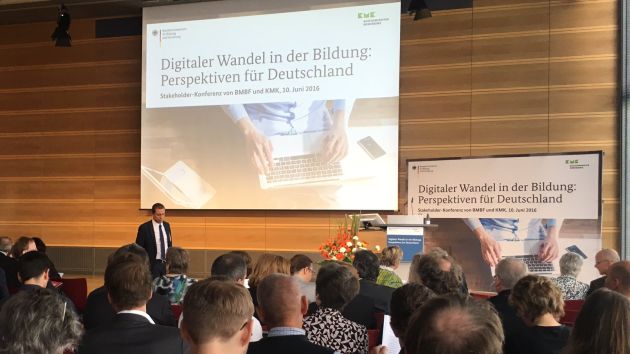With its education work, Siemens Stiftung aims to give fresh impetus to ensuring scientific subjects are taught in a modern, attractive way that leverages the potential of digital learning and teaching. The foundation was given its most recent opportunity to do that when it was invited by the Standing Conference of Ministers of Education and Cultural Affairs to collaborate in a keynote speech as part of the “Education in the digital world” strategy.
It is not surprising that the Standing Conference is addressing this topical issue more intensively: The ministers in Germany’s federal states who are responsible for education work together in this institution to uphold standards of quality at schools, in vocational training and at university across federal states and to ensure the necessary degree of common ground in education, science and culture.
The focus of the Standing Conference in 2016 is therefore on drawing up a comprehensive strategy for digital learning and teaching that formulates overarching objectives, comprises action fields and makes concrete policy proposals. Before the main conference “Digital transformation in education: Perspectives for Germany” began, expert talks were held with associations, stakeholders and representatives of the scientific disciplines in Berlin on June 8 and 9. The event was characterized by practice-oriented keynote speeches for each action field and subsequent discussions. In the “Educational media, content” action field, the organizers relied on the expertise of Siemens Stiftung. Maria Schumm-Tschauder, Project Manager of the media portal at Siemens Stiftung, replied to statements made in a strategy paper published by the Standing Conference. She explained what she sees as the four most important aspects a media provider must focus on if the use of digital media and content is to become lastingly rooted in teaching: They include a standardized development and quality assurance process and support for modern teaching and learning methods, particularly with greater use of open educational resources (OERs). Due to the wide range of ways OERs can be used, teachers can adapt them to their teaching needs and edit and modify content as a team, as well as disseminate and republish it, said Maria Schumm-Tschauder. Given the increasing heterogeneity in classrooms, that is an advantage that holds some weight when it comes to providing greater individual support for children and youngsters.



